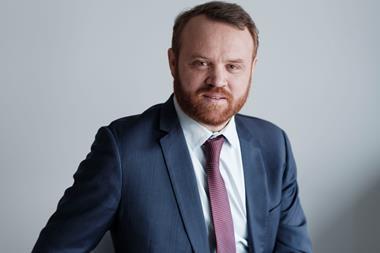Cécile Sourbès sits down with Matti Leppälä, secretary-general and chief executive at PensionsEurope, to discuss the next steps for the revised IORP Directive.
IPE: Last week, the commissioner for internal market and services, Michel Barnier, announced a further delay for the introduction of pillar one of the revised IORP Directive. It would seem the negotiating efforts from the pensions industry have paid off.
Matti Leppäla: We have been saying to the Commission for the past few years that a Solvency II framework could have a severe impact on the future of pension funds across Europe. And our judgment has been reinforced by the preliminary results of the first impact study published by the European Insurance and Occupational Pensions Authority (EIOPA) in April.
More important, the real outcome of the first QIS is still very unclear. EIOPA itself said the sponsor covenant element, as well as other aspects of the holistic balance sheet (HBS), needed to be further investigated. How could the Commission have introduced such a directive based on incomplete and flawed data? The announcement made by Barnier last week was therefore a sensible move.
However, it is still unclear whether the next Commission – taking place in 2014 – will decide to put the debate around pillar one back on the table. If they do, the question will be when and what form pillar one will take. In any case, I sincerely hope the Commission does not rush the introduction of the capital requirements.
IPE: The Commission will now shift its focus on pillars two and three of the directive. In your view, what are the potential challenges arising from the governance and reporting requirements?
ML: All along this process, we have not concentrated our efforts on pillars two and three simply because the capital requirements were the core concerns. We have nonetheless acknowledged the need to analyse carefully the potential risks arising from those two pillars.
First of all, we are concerned about the governance model for occupational pensions, which has so far been in the discussion based on the Solvency II framework for insurers. As for the reporting disclosure requirements, everything goes down to the cost issue.
We are therefore in favour of looking at what needs to be improved and how it should be best done. But one thing is sure: We are not in favour of copying and pasting what has already been done for insurers. Of course, there are some good principles for governance and disclosure under Solvency II. But they have been set for insurance companies and fit their needs.
Going back to the governance issues, it is also essential in the future to be able to have both employers and employees involved in the management structure to control the administration of the fund and its assets. The outcome should not be to limit the involvement of stakeholders in the management, and this is a major concern.
Additionally, it is worth noting that, if the governance requirements are raised compared with what is common practice today, it could potentially become difficult, not to say impossible, for a small pension fund to operate.
That question goes down to our members, the national pension fund associations, to determine whether those second and third-pillar requirements will push companies to consolidate their existing small pension schemes or even close them down. This is not at all a trivial issue. We have pledged to work with the Commission on those issues and are striving for good outcomes.
IPE: You were asked by the Commission earlier this year to conduct an analysis on the potential costs arising from pillars two and three. At what stage are you now?
ML: At the moment, it remains difficult to evaluate and quantify the costs of a framework that remains unknown. Our members have provided some sets of data and estimates to the Commission, but it is yet far from being precise and accurate. We agreed with the Commission that, at this stage, it is valuable only to identify main trends, as it is not feasible to provide accurate numerical data.
So far, only those of our members that have been involved in the whole process of the implementation of IORP II have been able to provide us with deeper analysis, hence the information received from Germany and the Netherlands. Also, our Italian, Spanish, UK and Belgian members have been able to give relevant information. But when this process goes forward, it is important to evaluate the possible effects on all member states.
Moreover, the systems are so diverse across Europe that it makes the costs even more difficult to evaluate. Therefore, the results we have managed to extract cannot in any case be extrapolated to represent any of the member states' pension systems.
Beyond that, we now have to take into consideration the fact there will be no first pillar – at least not in the immediate future. This, in turn, could impact the second and third pillars, since many of the requirements set under the three pillars are interconnected.
IPE: What is the deadline set by the Commission to receive your final outcome on the cost impact of pillars two and three?
ML: We have been asked to send our input by the end of May. Going forward, we hope to be able to provide more in-depth data, as the administrative costs could represent a serious burden for pension schemes in future. But we have to be able to prove it and show relevant data to the Commission. It is then up to the Commission to see how it will treat those findings.
We value very much the fact the Commission has trusted us to work with them in this capacity. This is a very positive sign, and I hope we will be able to work in partnership with them. If we do work together, the final outcome of the IORP II Directive will be a suitable framework for pensions.











No comments yet